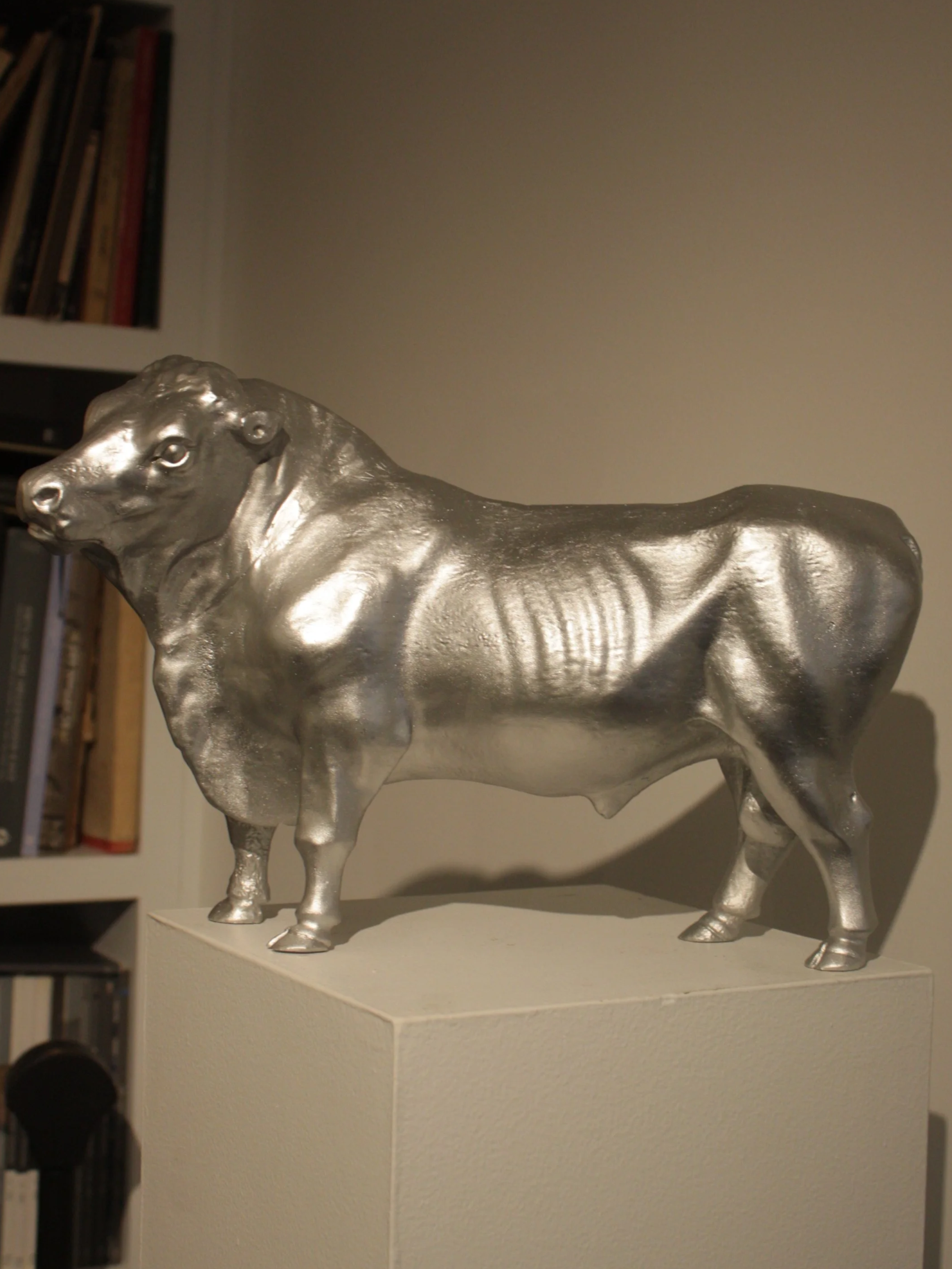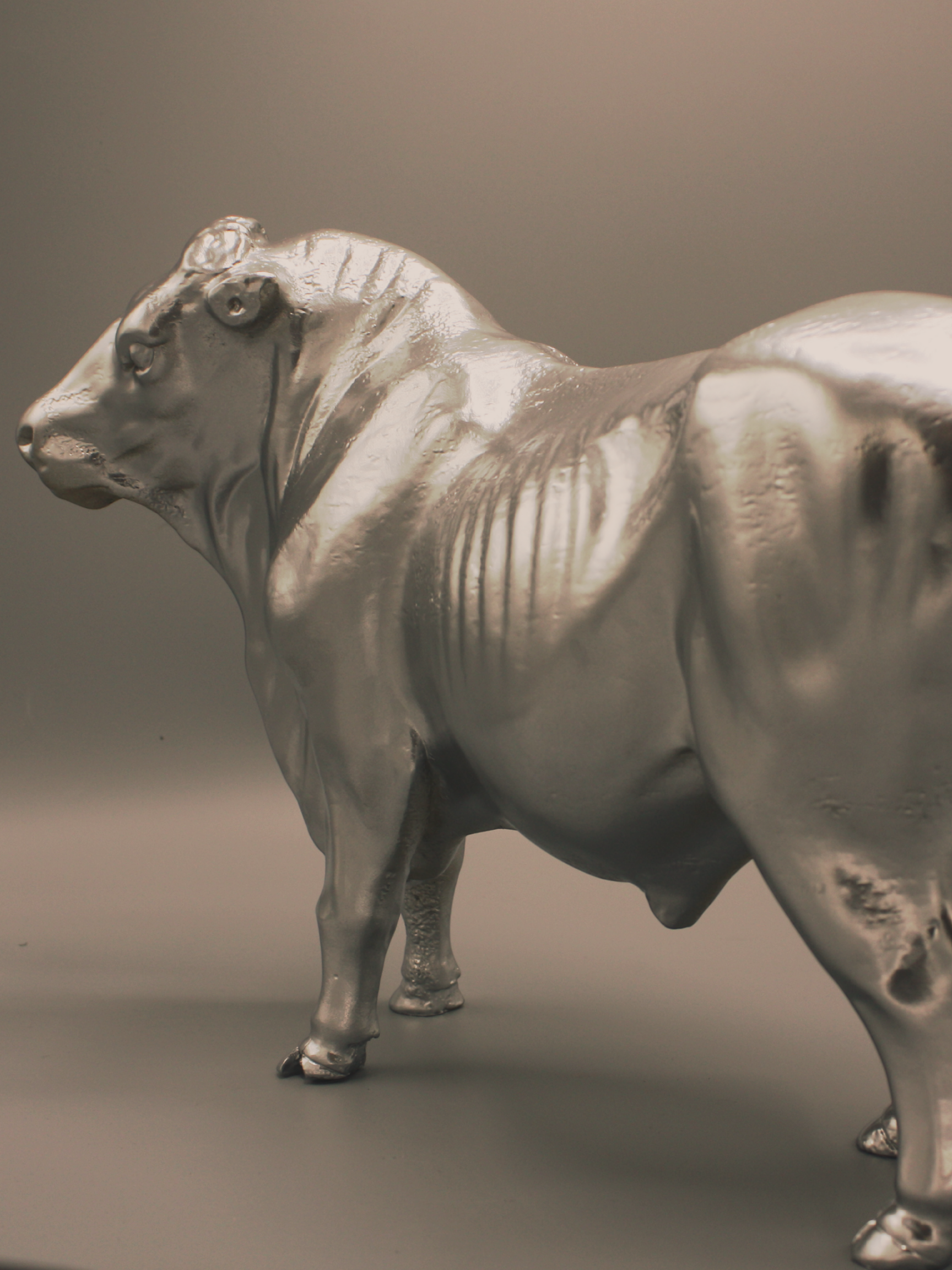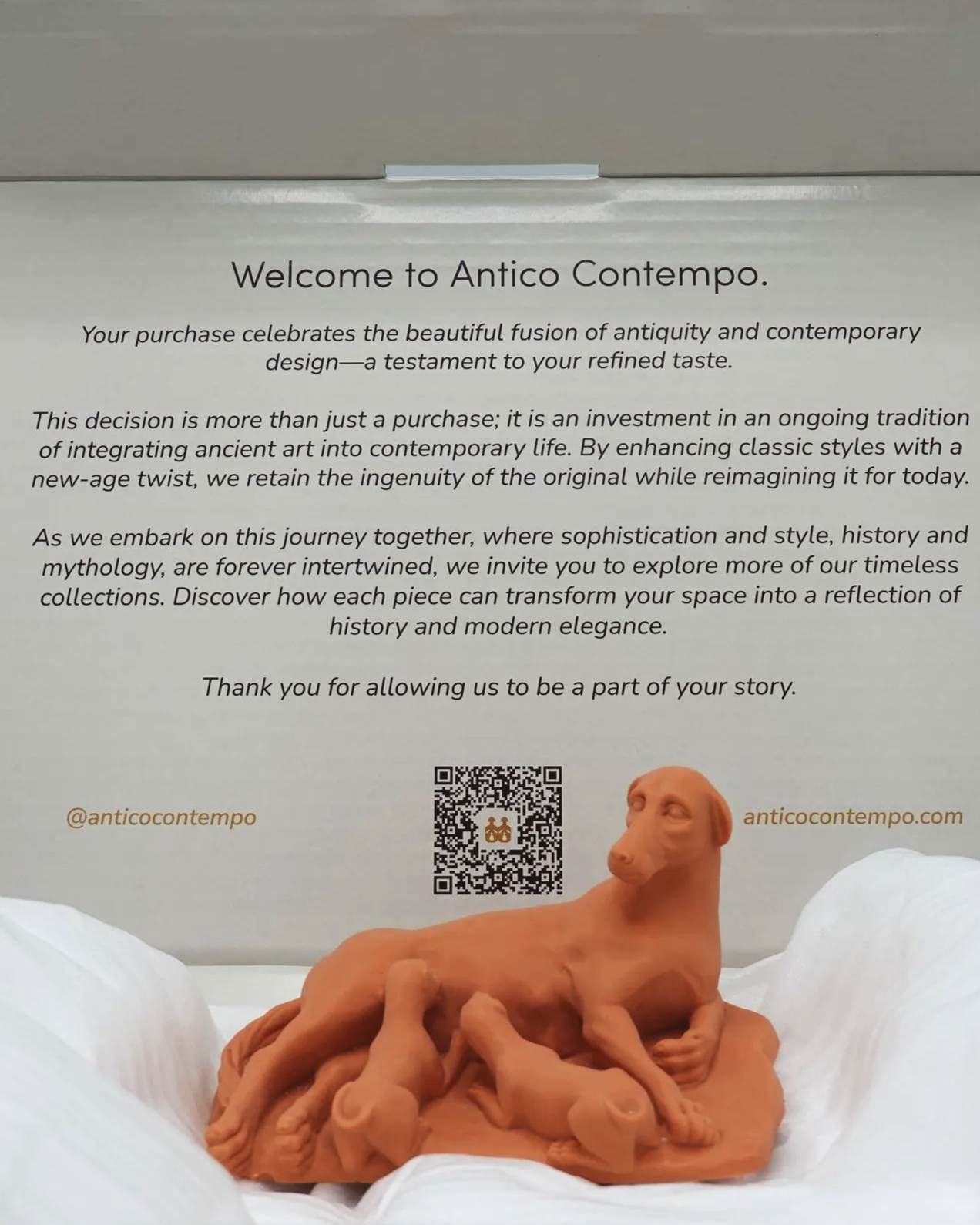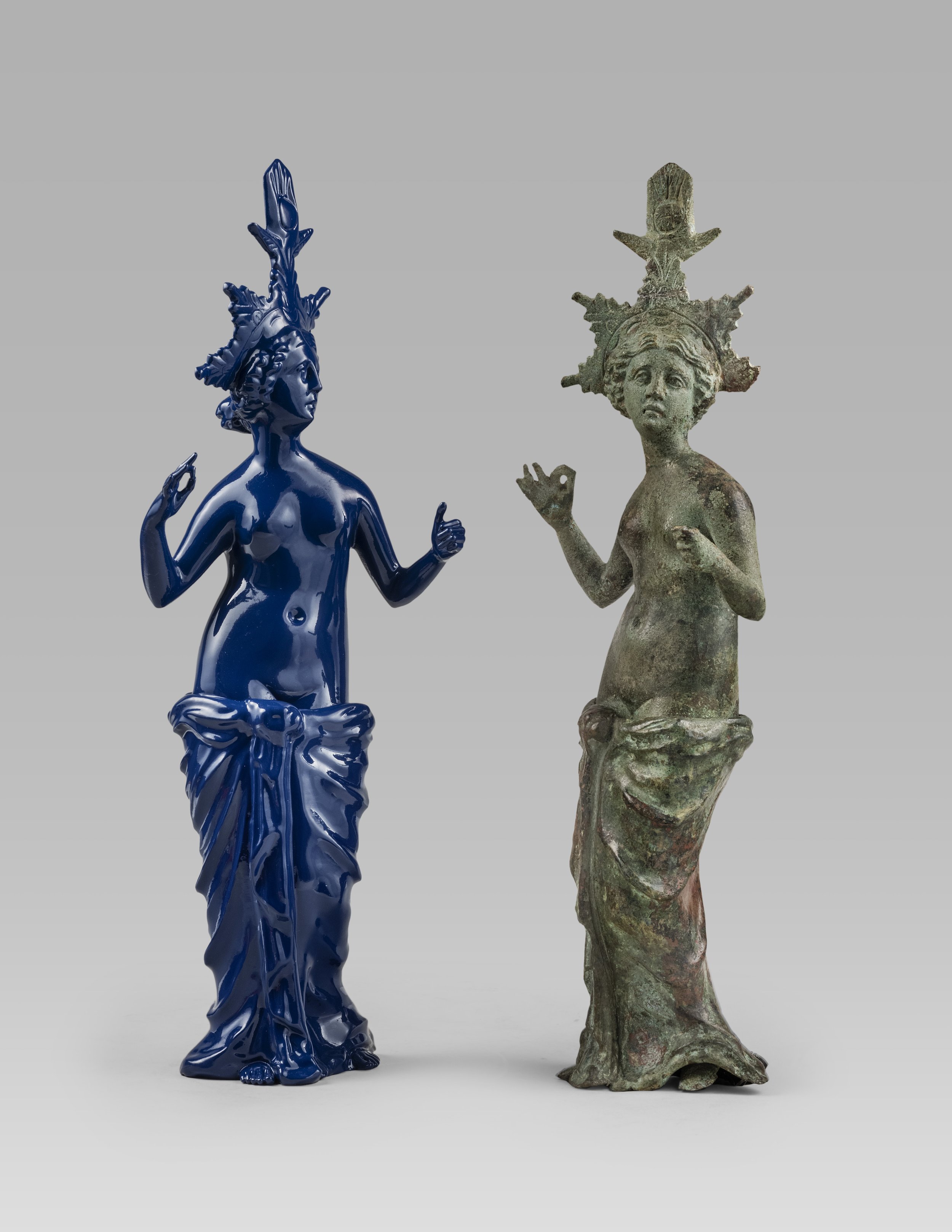 Image 1 of 2
Image 1 of 2

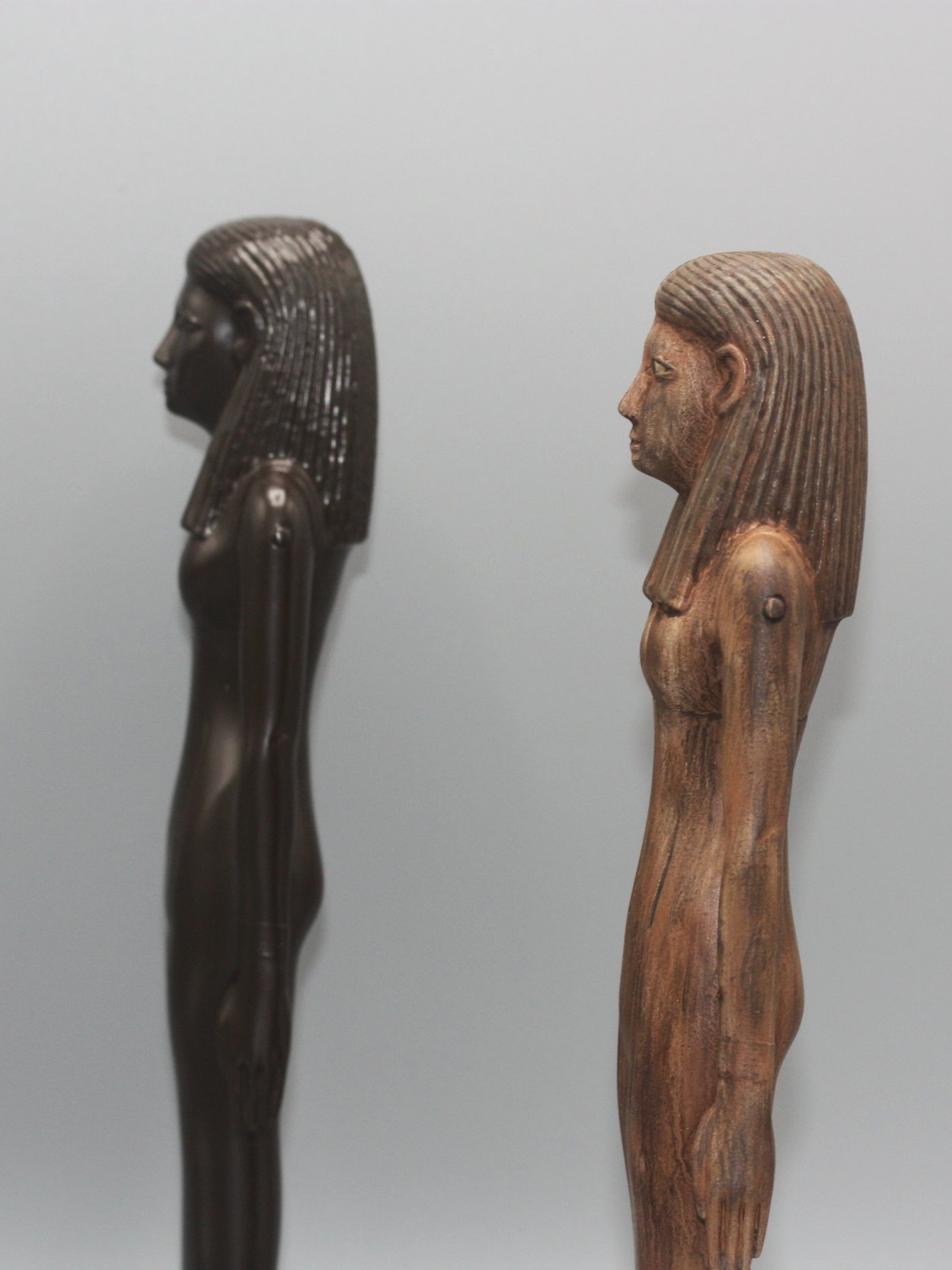 Image 2 of 2
Image 2 of 2



Exceptional Figure of Hetep
Alexander Aboutaam
Limited Edition of 11
Contempo
2025
High-grade polyresin, fully hand painted and hand-polished
H: 27 cm (10.7)
Ancient Original
Middle Kingdom of Egypt ca. 1900 B.C. - 1800 B.C
Painted Wood, alabaster, obsidian, copper
H: 27 cm (10.7)
Description
This polyresin, hand-painted contempo represents an Egyptian figure of a lady. The masterful finish gives this piece quiet power, forging a rare and striking connection to its ancient source.
The original, wooden figure is from the Middle Kingdom of Egypt ca. 1900 B.C. - 1800 B.C and contains many precious materials: inlaid eyes composed of alabaster and obsidian framed in copper from later time periods. In the base of the original lies a black-painted hieroglyphic inscription, "An invocation of bread and beer, oxen and fowl, for the Ka of ...hetep, justified.”
This type of statue served as a surrogate for the deceased and could receive offerings, holding the dead’s ka, which was was considered an aspect of the personality or life force of an individual that lived on after death. They were typically placed either in an offering chapel or a tomb, or even inside a coffin, a practice that began in the late Old Kingdom.
Superbly sculpted and depicted standing with her feet together, the separately made arms at her side are pinned in place with wood dowels. She has long delicate fingers and is wearing a tightly fitted sheath dress, revealing the form of her body beneath, with straps covering her breasts. Her wrists and legs are ornamented with elaborate bracelets and anklets. She has a slender nose on a triangular face, a slightly smiling mouth and a pointed chin, with a voluminous, striated, tripartite wig.
Alexander Aboutaam
Limited Edition of 11
Contempo
2025
High-grade polyresin, fully hand painted and hand-polished
H: 27 cm (10.7)
Ancient Original
Middle Kingdom of Egypt ca. 1900 B.C. - 1800 B.C
Painted Wood, alabaster, obsidian, copper
H: 27 cm (10.7)
Description
This polyresin, hand-painted contempo represents an Egyptian figure of a lady. The masterful finish gives this piece quiet power, forging a rare and striking connection to its ancient source.
The original, wooden figure is from the Middle Kingdom of Egypt ca. 1900 B.C. - 1800 B.C and contains many precious materials: inlaid eyes composed of alabaster and obsidian framed in copper from later time periods. In the base of the original lies a black-painted hieroglyphic inscription, "An invocation of bread and beer, oxen and fowl, for the Ka of ...hetep, justified.”
This type of statue served as a surrogate for the deceased and could receive offerings, holding the dead’s ka, which was was considered an aspect of the personality or life force of an individual that lived on after death. They were typically placed either in an offering chapel or a tomb, or even inside a coffin, a practice that began in the late Old Kingdom.
Superbly sculpted and depicted standing with her feet together, the separately made arms at her side are pinned in place with wood dowels. She has long delicate fingers and is wearing a tightly fitted sheath dress, revealing the form of her body beneath, with straps covering her breasts. Her wrists and legs are ornamented with elaborate bracelets and anklets. She has a slender nose on a triangular face, a slightly smiling mouth and a pointed chin, with a voluminous, striated, tripartite wig.
Creation
The creation of the contempo starts with research into authentic masterpieces, allowing Antico Contempo to determine how antiques can be thoughtfully reimagined through a contemporary lens. Every piece is examined to identify its unique qualities and what processes are required for adaptation.
High-resolution 3D scans are captured using structured light and infrared sensing, with real-time refinements made to preserve surface nuances and structural integrity. The raw data is reworked to create watertight, workshop-ready meshes.
Through a meticulous back-and-forth process of digital sculpting, 3D printing, and casting and molding, Antico Contempo creates a physical art piece that combines aesthetics of both the ancient and contemporary world.










